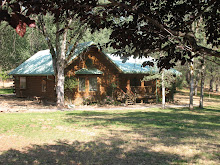 We like to travel into the back country, destinations reached only on foot or hoof. We like to eat, stay warm and dry, and sleep comfortably. Our supplies for several days are laid out. I am
We like to travel into the back country, destinations reached only on foot or hoof. We like to eat, stay warm and dry, and sleep comfortably. Our supplies for several days are laid out. I amglad I can take more stuff than I can carry on my own!


 All your supplies can be loaded into 'panyards', which are containers that you hang from the pack saddle. Or wrap everything in a tidy little package and tie the 'manties' to the saddle. The packages can be referred to as mantees and the canvas sheets can be called mantis. Yep, for you spelling buffs, I did spell it three different ways: mantees-manties-mantis, all are correct.
All your supplies can be loaded into 'panyards', which are containers that you hang from the pack saddle. Or wrap everything in a tidy little package and tie the 'manties' to the saddle. The packages can be referred to as mantees and the canvas sheets can be called mantis. Yep, for you spelling buffs, I did spell it three different ways: mantees-manties-mantis, all are correct. The Decker saddle is stronger, has metal D-rings to tie to, can be adjusted to fit mules or horses. The cinch goes around the animal's girth and holds the saddle on; the breast collar fits around the chest to prevent the saddle from slipping back when climbing steep mountains; and the breeching is snug around the mule butt to keep the saddle from sliding up on his neck when going steep down hill. A good fit is critical.
The Decker saddle is stronger, has metal D-rings to tie to, can be adjusted to fit mules or horses. The cinch goes around the animal's girth and holds the saddle on; the breast collar fits around the chest to prevent the saddle from slipping back when climbing steep mountains; and the breeching is snug around the mule butt to keep the saddle from sliding up on his neck when going steep down hill. A good fit is critical.
 Lots of good strong rope and very special (secret) knots are used to secure the mantees to each side of the pack animal. The loads should be of equal weight and make sure they are loaded evenly. This is BJ, my friend Sharon's horse getting ready for her first trail ride carrying packs.
Lots of good strong rope and very special (secret) knots are used to secure the mantees to each side of the pack animal. The loads should be of equal weight and make sure they are loaded evenly. This is BJ, my friend Sharon's horse getting ready for her first trail ride carrying packs. Ropes go over, around, under, through, over some more, and tucked: all in a well orchestrated and planned design. I am still an apprentice knot securer. This photo illustrates why I need a short pack animal.
Ropes go over, around, under, through, over some more, and tucked: all in a well orchestrated and planned design. I am still an apprentice knot securer. This photo illustrates why I need a short pack animal.
 Sharon's first time leading a pack horse, BJ's first time being a pack horse, and Cocoa's first time being followed so closely by an animal carrying such a thing.
Sharon's first time leading a pack horse, BJ's first time being a pack horse, and Cocoa's first time being followed so closely by an animal carrying such a thing.


And if the trout out smart you, don't fret, you won't go hungry because steaks, potatoes, corn-on-the-cob and even a romantic bottle of wine are in the cooler that the mule carried up the mountains.
Happy Trails to all!


4 comments:
If you need a short pack animal, shouldn't maybe you think about a donkey instead of a mule? *giggle*
Thank you for the lesson, how very cool. Do lots of people use mules to get to out of the way spots in the mountains? You mentioned an association in your previous post, is it pretty active?
Bet, it won't be long before Jerry has you loading and tieing your own mules packs on. If you can find a mule short enough for you to reach, so you can get all those knots in right place. NO, maybe be better if Jerry continued to do the loading and tieing of packs.
Happy trails to you.
Donkeys can be pack animals too. But I am liking mules better.
Mules seem to be popular but horses outnumber them. Back Country Horsemen Assoc. are all over the USA and goal is to protect our right to use wilderness trails and educate people on 'gentle use' of the back country. Jerry does all the packing, I let him. ;-)
Jean,
Nice article but I have to disagree with the practice of tying any lines back and forth between two many loads. A sling rope does just that, acts as a sling which holds the manty on each side of the pack saddle. That way the manty can move a little back and forth and "right" itself in the event the mule brushes by a tree, rock or whatever. This capability of packing with manty loads is one of the greatest benefits over decker packing. Also in the event of a wreck eack load can be quickly removed with the tug of a quick release knot used to secure the sling line. Tying over the top between mantie loads just asks to create a wreck when encountering tree limbs that reachover a trail. Your partner needs to rethink that method. Scott Willson
Post a Comment